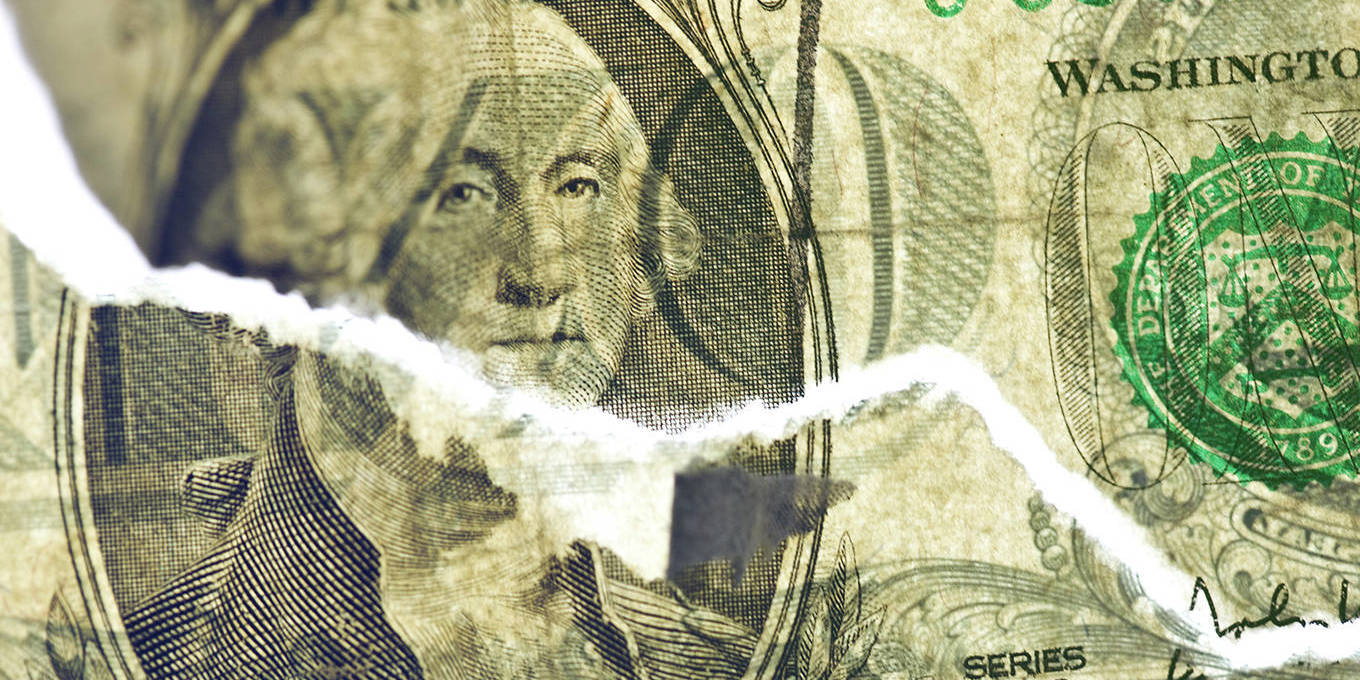
NEW YORK – At the end of World War II, the United States accounted for more than half the world’s economic output and gold reserves. The United Kingdom was effectively bankrupt, with the remnants of the sterling area bound together by capital and trade controls. Once the British pound became convertible in July 1947, owing to US insistence, it succumbed to overwhelming selling pressure. The dollar, which was pegged to gold at $35 an ounce, was buoyed by America’s privileged position within the newly formed International Monetary Fund and quickly established itself as the bedrock of global trade and finance.
While the US today accounts for only 25% of global output, the dollar remains involved in nearly 90% of all foreign-exchange transactions. Despite its central role in cross-border trade and borrowing, however, the greenback’s share of central-bank foreign-exchange reserves has fallen from 72% in 2000 to 59% today. Given recent harsh criticism of US currency policy by officials in China, Russia, Brazil, Saudi Arabia, and elsewhere, it may therefore appear that the dollar’s uncontested reign is coming to an end, with far-reaching global economic consequences.
Importantly, the biggest threat to the dollar’s dominance comes not from competitive alternatives, but from the US government itself. The recent standoff over the federal debt ceiling, which threatened to trigger global financial instability, is a case in point. The prospect of endless repetition of such reckless partisan conflict prompted Fitch Ratings to downgrade the country’s credit rating from AAA to AA+, highlighting doubts about whether global investors can continue to trust the “full faith and credit of the US government.”
But an even more immediate threat to the greenback’s dominance is its growing weaponization. Whereas US-led sanctions have been largely ineffective in changing the behavior of autocratic regimes in North Korea, Iran, and Russia, they have inflicted considerable economic pain. And just as the overuse of antibiotics fuels antimicrobial resistance, excessive use of sanctions prompts targeted countries, as well as potential targets, to reduce their engagement with the US financial system. Although this avoidance is costly, the costs are trivial compared to those of, say, having one’s central-bank reserves frozen, or even seized. Prominent US commentators have advocated such seizures in the case of Russia, in order to compensate Ukraine for the horrific costs of Russia’s invasion.
But if the dollar should lose its privileged place, what could replace it? At present, the euro, which accounts for 20% of global central-bank reserves, is the only currency that could realistically serve as a substitute. Its appeal, however, is undermined by the fragmentation of Europe’s national sovereign-debt markets, as well as lingering doubts about the European Union’s long-term viability in the wake of the UK’s departure.
The Chinese renminbi, which accounts for less than 3% of global reserves, is not a serious threat to dollar hegemony. Given China’s deteriorating legal protections, stringent capital controls, and relatively underdeveloped bond markets – from which foreign investors pulled a record $91 billion in 2022 – the renminbi is still far from a credible store of value. The currency’s internationalization stalled a decade ago when capital inflows driven by expectations of perpetual appreciation came to an end.
So, whereas the dollar’s continued dominance should not be taken for granted, there is currently no viable single alternative. Instead, many commentators have pointed to the probable emergence of a “multi-currency” world in which the dollar plays a much-diminished role. Such a world, however, is not compatible with the multilateral trading system as we know it.
To be sure, countries can sidestep the dollar through barter trade, using commodities such as gold or oil. Iraq, for example, swaps oil with Iran in exchange for natural gas. But governments will not accumulate currencies for which they and their citizens have no practical use. Thus, the greenback’s fading dominance could mark the demise of a highly efficient structure of global commerce in which the flow of goods and services is determined by cost and quality. Instead, this flow would reflect whether a bit more or less of a given foreign currency is wanted in an exporting country.
Once countries abandon the practice of stockpiling currency through current-account surpluses, they are compelled to implement trade restrictions and other distortive measures to maintain flat bilateral trade balances. That is why the dollar, despite its drawbacks as a global reserve currency, remains integral to the multilateral trade system built up under the 1947 General Agreement on Tariffs and Trade and its successor, the World Trade Organization. Although this regime is often criticized in the US for helping China rise through mercantilist means, it has played a critical role in spurring global innovation, reducing costs, and lifting hundreds of millions out of poverty.
Although the US can and should do more, through better education and job training, and stronger social safety nets, to support its citizens left behind by globalization, it must also ensure that its currency remains reliable enough to continue supporting world trade. That means putting an end to periodic partisan default brinkmanship, and exercising greater prudence and restraint in the use of unilateral financial sanctions.
Benn Steil is Director of International Economics at the Council on Foreign Relations and the author of The Marshall Plan: Dawn of the Cold War (Simon and Schuster, 2018).
Copyright: Project Syndicate, 2023.
www.project-syndicate.org
















